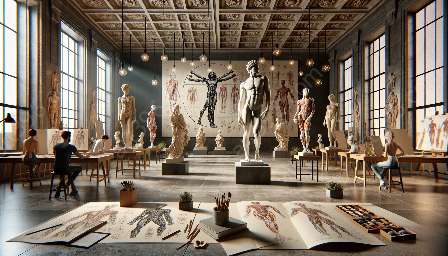Artists have long been fascinated with the human body and its movement, often using it as a primary subject in their work. Understanding the relationship between body movement, composition, and artistic anatomy is essential for creating dynamic and visually compelling artwork.
Body Movement and Composition
Body movement is a powerful tool for creating dynamic compositions in art. By understanding the principles of composition, artists can use the human body's movements to direct the viewer's eye and create a sense of energy and rhythm in their work. The use of body movement allows artists to convey emotion, balance, and tension within their compositions.
The Relationship Between Body Pose and Composition
Body pose is a crucial element in creating dynamic compositions. Artists can manipulate the body's pose to create a sense of movement and flow within their artwork. Understanding the principles of balance, weight distribution, and gesture in body pose enables artists to create visually striking and engaging compositions.
Artistic Anatomy and Body Movement
Artistic anatomy plays a central role in using body movement to create dynamic compositions. By studying the anatomical structure of the human body, artists gain a deeper understanding of how the body moves and functions. This knowledge allows artists to accurately depict body movement in their compositions, enhancing the overall impact and realism of their artwork.
Techniques for Using Body Movement in Composition
There are several techniques artists can employ to utilize body movement in their compositions:
- Gesture Drawing: Gesture drawing involves capturing the essence of a figure's movement in a few quick, energetic lines. This technique allows artists to infuse their compositions with a sense of spontaneity and vitality.
- Dynamic Poses: Choosing dynamic and engaging poses for figures within a composition can create a sense of movement and drama, enhancing the overall impact of the artwork.
- Flow and Rhythm: Using the body's movement to create a flow and rhythm within the composition helps guide the viewer's eye through the artwork, creating a sense of visual harmony.
- Emotional Expression: Body movement can convey a wide range of emotions, and artists can use this to evoke specific moods and feelings within their compositions. Understanding the relationship between body movement and emotion is key to creating compelling and impactful artwork.
Conclusion
Understanding how artists can use body movement to create dynamic compositions is essential for anyone interested in creating visually compelling artwork. By leveraging the relationship between composition, body pose, and artistic anatomy, artists can breathe life and energy into their compositions, captivating viewers and leaving a lasting impression.

